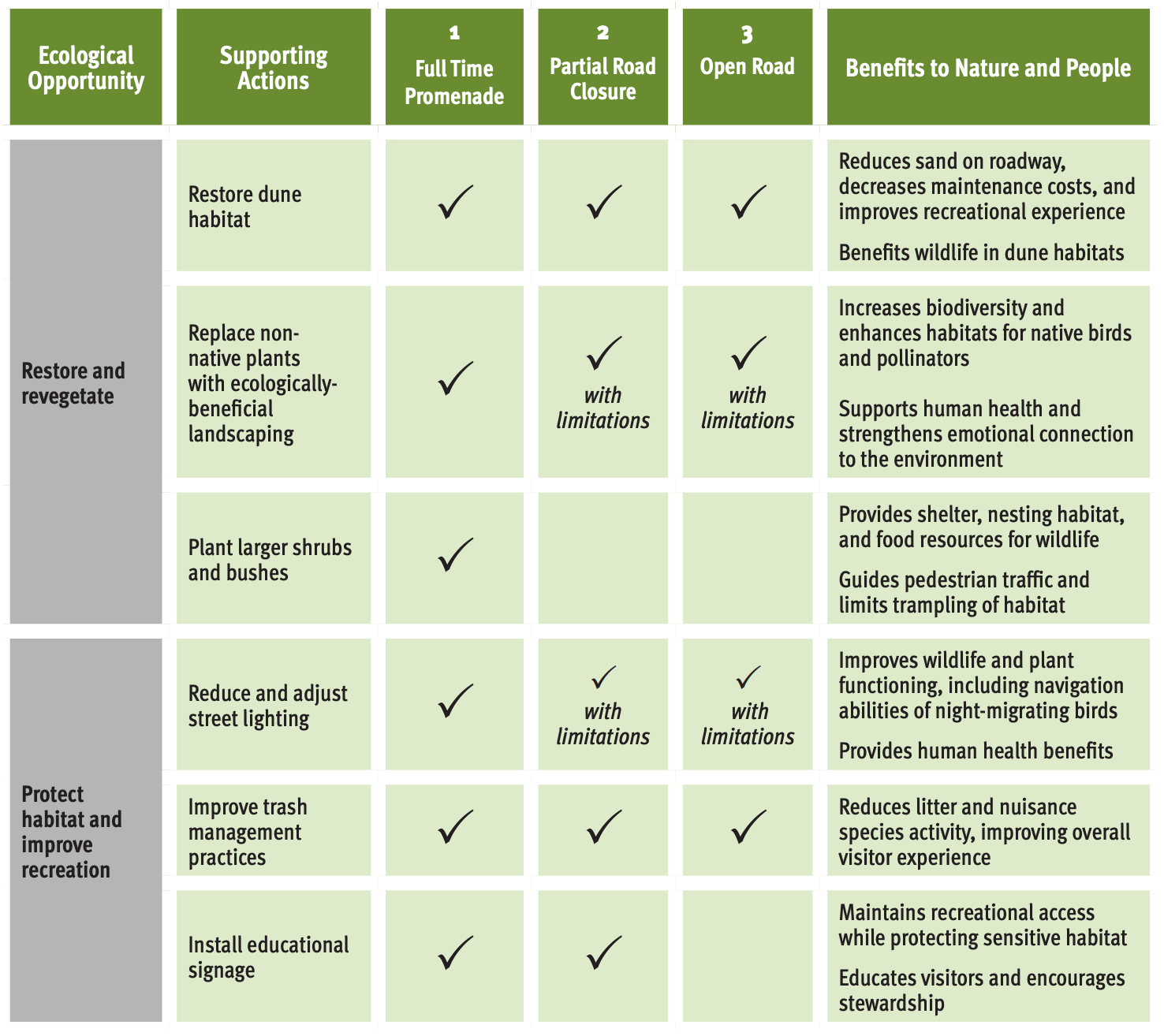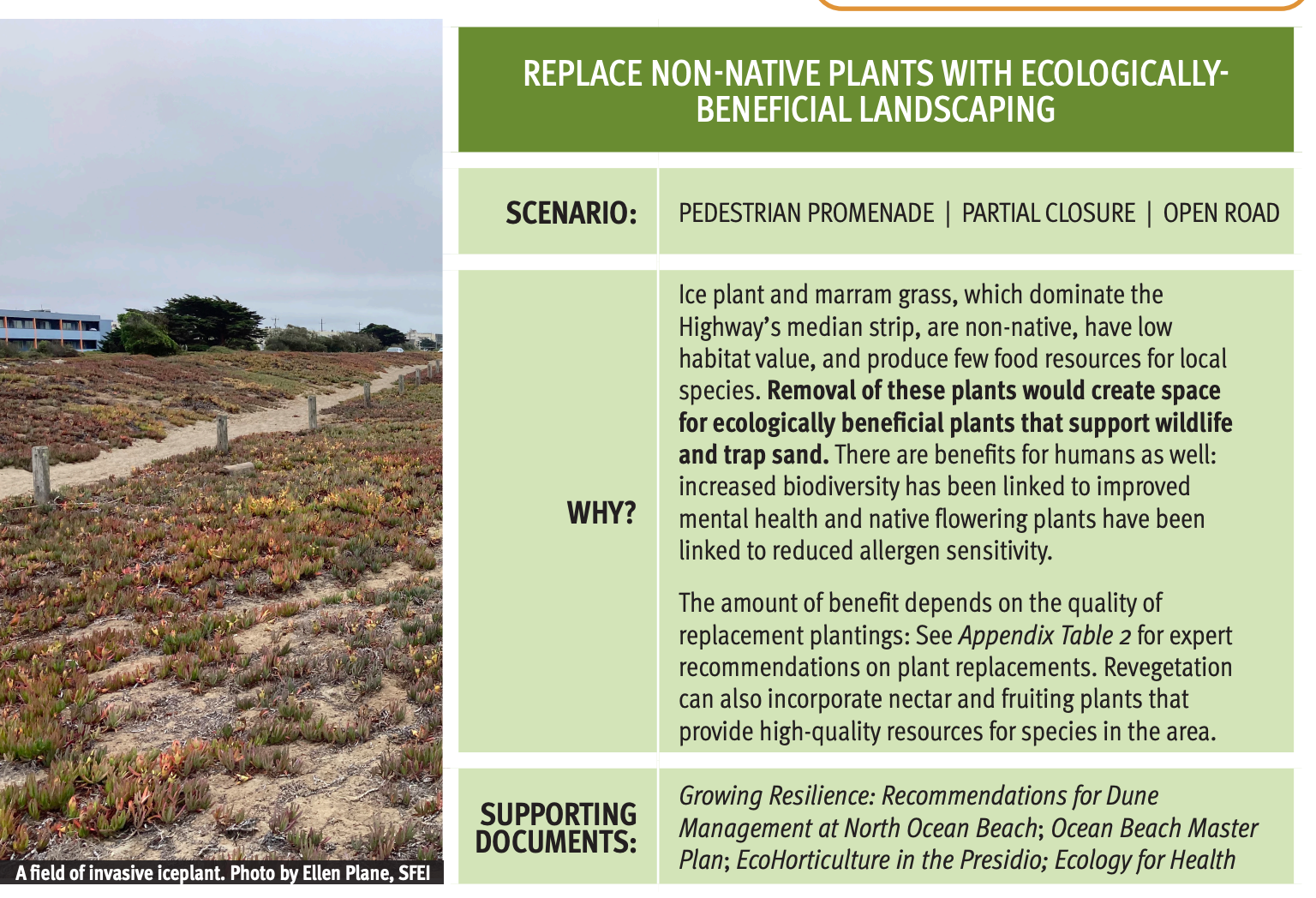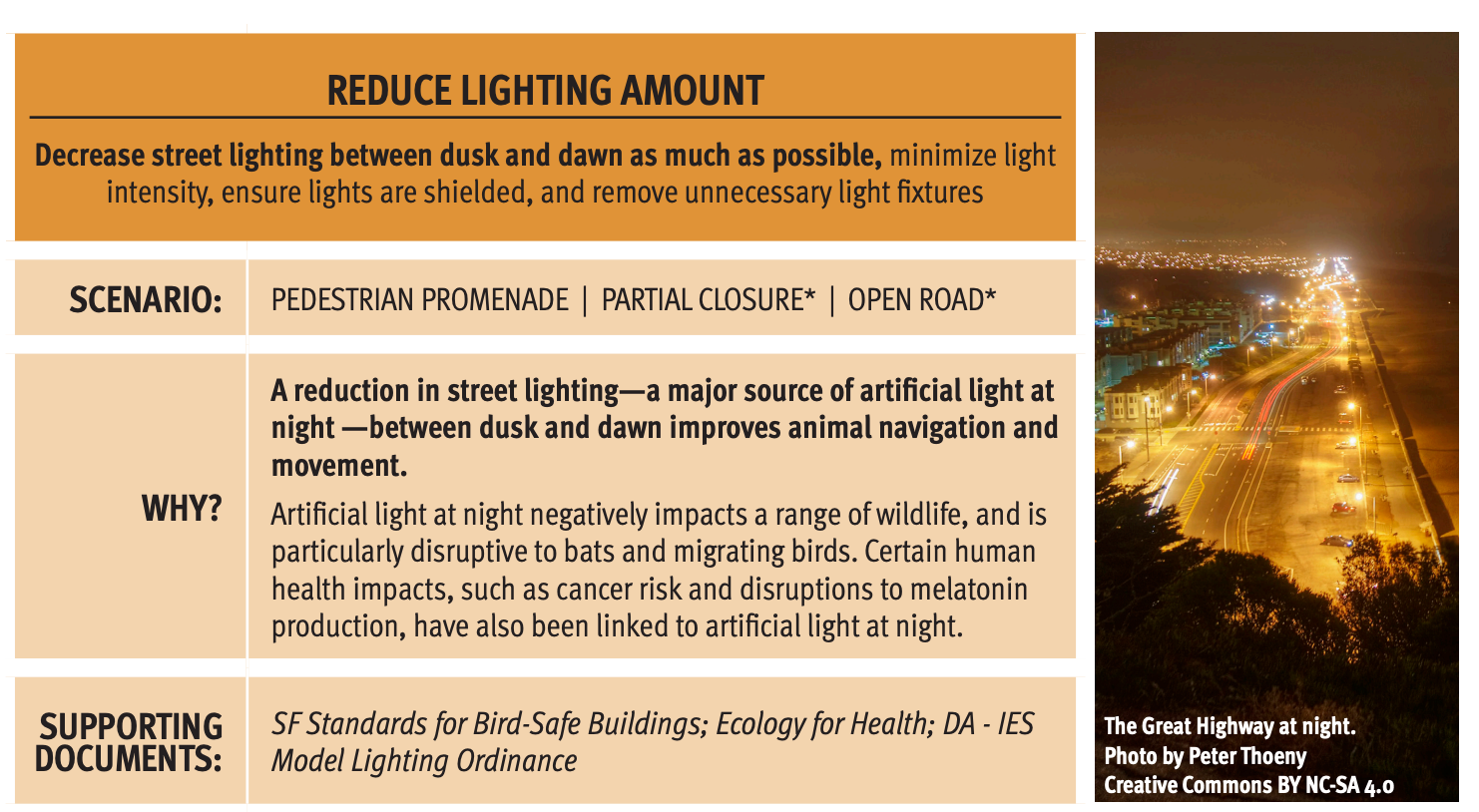Confirmed: Removing Cars from Great Highway is Good for the Environment

The SF Estuary Institute just released a comprehensive report evaluating the different options on the table for cars on the the Great Highway, and environmental impact of each. Spoiler, "closing the roadway to cars entirely has the greatest and most immediate ecological benefits".

The report is very clear that removing cars is the best option. Wildlife are significantly harmed by car noise, lights, and physical conditions. This sounds obvious, but trolls out there seem to think otherwise. Luckily, the science is on our side.

There are two major sections of potential benefits the report highlights. The first is dune restoration. While there is work that can be done at any time on restoring dune and removing nonnative ice plant/marram grass, planting larger native shrubs at the limit of sensitive areas is best done without cars around.



Artificial lighting is harmful to a number of species. It is of course required if cars will be there at any time. Removing lighting helps wildlife, humans, and the city budget. Adjusting the color temperature of the remaining lighting also improves the situation.


It's worth noting that cars are uniquely bad right next to the ocean. Normally, oil and particulates washing into the stormwater system will go through the treatment plants (like the one near the crumbling Great Highway extension). But that close to the ocean, the toxic chemicals go directly into our ground and water. It's not good.
The report mentions a few other improvements, so it's worth checking out. But this mostly confirms what we already know. Removing cars improves lives for humans and nature. Traffic tends to evaporate as people seek other modes, and everybody benefits. K is endorsed by every other environmental org as well, so this is consistent. Yes on K!
We're only a week and a half out from the election and it's gonna be close! PLEASE sign up to knock doors for K: lu.ma/obp. There are events almost every day and every little bit helps. The Great Hauntway Halloween event is also this Sunday and there are plenty of roles available: https://lu.ma/hauntway. Thanks so much in advance.
Don't forget to vote! Our SSR voter guide is here:
